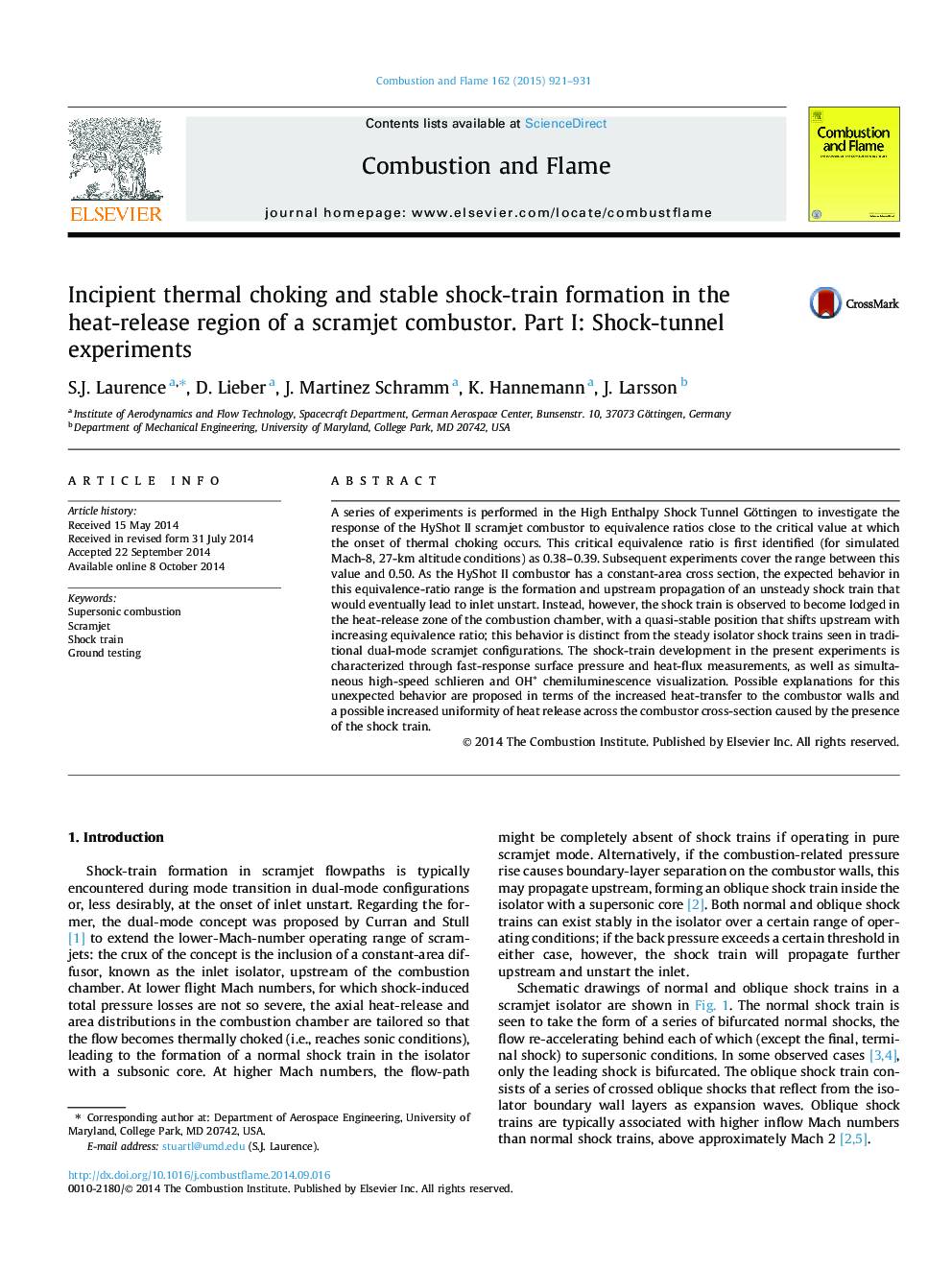| Article ID | Journal | Published Year | Pages | File Type |
|---|---|---|---|---|
| 168728 | Combustion and Flame | 2015 | 11 Pages |
A series of experiments is performed in the High Enthalpy Shock Tunnel Göttingen to investigate the response of the HyShot II scramjet combustor to equivalence ratios close to the critical value at which the onset of thermal choking occurs. This critical equivalence ratio is first identified (for simulated Mach-8, 27-km altitude conditions) as 0.38–0.39. Subsequent experiments cover the range between this value and 0.50. As the HyShot II combustor has a constant-area cross section, the expected behavior in this equivalence-ratio range is the formation and upstream propagation of an unsteady shock train that would eventually lead to inlet unstart. Instead, however, the shock train is observed to become lodged in the heat-release zone of the combustion chamber, with a quasi-stable position that shifts upstream with increasing equivalence ratio; this behavior is distinct from the steady isolator shock trains seen in traditional dual-mode scramjet configurations. The shock-train development in the present experiments is characterized through fast-response surface pressure and heat-flux measurements, as well as simultaneous high-speed schlieren and OH∗ chemiluminescence visualization. Possible explanations for this unexpected behavior are proposed in terms of the increased heat-transfer to the combustor walls and a possible increased uniformity of heat release across the combustor cross-section caused by the presence of the shock train.
